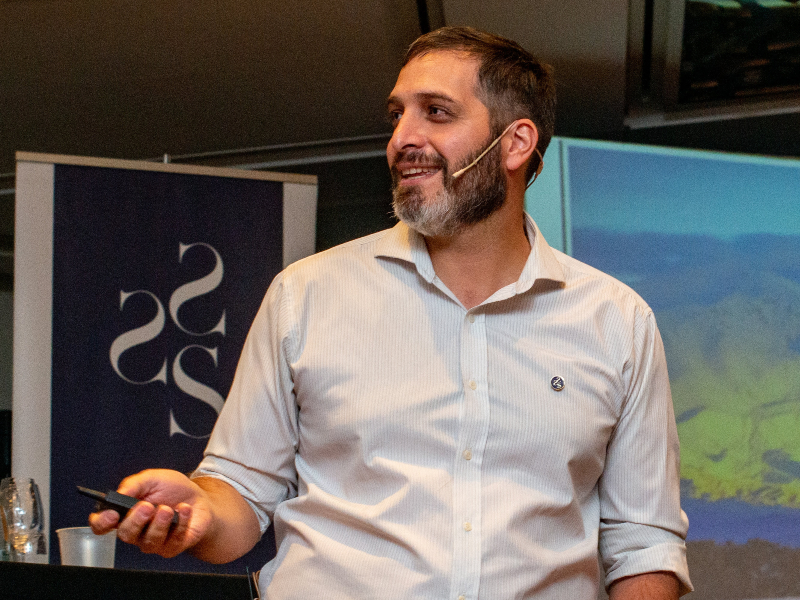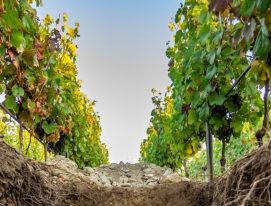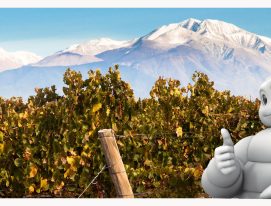The geophysicist Guillermo Corona spends his work days on his main job: searching for oil. However, on the weekend, he indulges in a personal passion that dates back to his days studying at an agricultural and oenologicial college in Mendoza: he spends his “free time” touring vineyards and studying their soils to provide wineries with knowledge that will help them to improve their wines.
Author of the book Geografía del vino (A Geography of Wine) and creator of the Instagram account @geografiadelvino, Guillermo Corona helped to draw up the first regional study of the terroirs of Mendoza, San Juan and the Calchaquí Valleys. In this interview, he discusses his passion for wine and how greater knowledge of the soils is improving the quality of Argentine wines.
Interview with Guillermo Corona

How did your interest in wine arise?
I’ve always been close to wine because I studied at an agricultural and oenological college, part of the University of Mendoza, where most of Argentina’s oenologists and winegrowers come from. In fact, I almost studied oenology, but I’ve always enjoyed physics, math, geology and geography, so I ended up in geophysics.
Did it take you long to bring the two worlds, geophysics and wine, together?
It never occurred to me that there might be a crossover but I encountered it when I went back to live in Mendoza in 2014 after living in Buenos Aires and travelling a lot for my work. I started to meet up with friends from school, who are all oenologists and agricultural engineers, and started to visit and write about vineyards.
What was the existing state of information about the vineyards you started to research?
There was very little content and it was all poorly organized. When my friends asked me for help studying the soils in their vineyards, I looked for existing information on the internet and what I found was pretty vague. The problem is that geologists and vineyard workers speak two different languages. It was difficult to span that gap and learn how best to help them.
How do you work in the vineyards today?
I begin by familiarizing myself with the soil variations that one might expect to find in a given vineyard in a given area and use that as a basis for more focused studies. Depending on what I find, I suggest changes in how the vineyard is managed. In Gualtallary, for example, you’ll find 2 or 3 different soil types divided into units of a hectare or so. The question is whether the winery can handle that in agricultural and winemaking terms. Because if you can’t work with separate polygon parcels, it’s a waste of time and resources to study your soils.

For example?
Let’s say you have a 100-hectare vineyard. 40 of those hectares are one soil type, 30 another and the final 30 different again. You know that the 40 hectares of the first soil type are going to give you an entry level wine, the next 30% a better quality one and the final 30% the best. But you need to know how to deal with this change to your pyramid in commercial terms.
Ideally, you’d work with a vineyard before it’s planted. After seeing the soil profile and assessing the qualities each type will produce, you can adjust the portfolio. Then you have the information to decide what varieties to plant, how to divide up the different parcels, your irrigation and pruning regimes, and even what kind of winery to build to handle the different volumes of wines you’ll get from each soil type.
So the quality of a wine depends exclusively on the soil it came from? It’s a consequence of all the research that has gone into it; not just the soil. You also need to understand the climate and the change of seasons.
So how do you work with an existing vineyard?
When the vineyard has already been planted, you can start by outlining the area that studies suggest will produce the best wine and work with it separately. Then, if it does indeed produce the best wine, you might add another parcel where the quality is high too. Many wineries have worked successfully that way.
So have soil studies introduced a new paradigm in terms of quality?
10 or 15 years ago other criteria were used to differentiate one wine from another in a winery’s portfolio. Generally, they focused on the vineyards where they got the best grapes and allowed the vines to have lower yields, or to ripen more, or to age them for longer in barrels. Now we know that quality is intrinsic to parcels within a vineyard and is linked to different soil profiles.
And you carried out a study of different terroirs for Coviar?
I was involved on the technical side. The study encompassed all the productive oases in Mendoza, San Juan and the Calchaquí Valleys where official bodies worked with an interdisciplinary group that studied geology, climate and landscape using the same research pattern. The results will be presented in September and the good thing about it is that there will finally be a study that applies the same working criteria across the different viticultural regions of Argentina.
Is our better knowledge of the soils coming out in the wines?
Yes, it’s coming through in a lot of wines. A more holistic approach to a sense of place, one that encompasses soils but also the climate, is the way forward and it’s showing in the wines that have taken the lead in applying these new methods.



